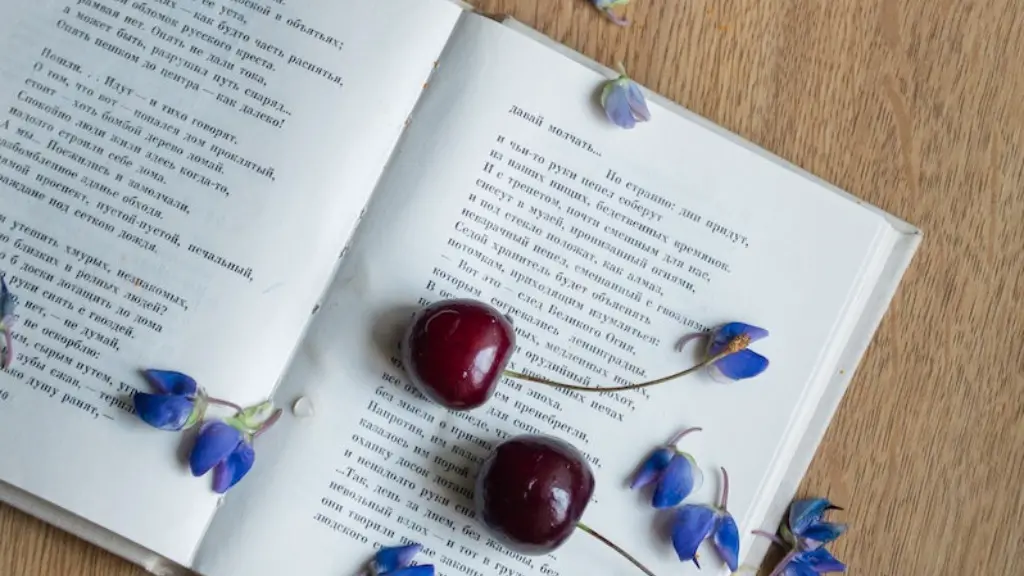Background of Publishing a Poetry Book
Publishing a poetry book can be an incredibly rewarding experience, but it is important to understand the process before committing to putting your poems into print. Established publishers need poets to provide them with an edited, finalized manuscript of their poems and in order to accomplish this, authors must ask themselves an important question: How many poems should a book have? To answer this question, it is crucial to consider the factors that go into producing a work of poetry, including the type of book you want to create, the potential to reach different audiences, potential publisher guidelines, and more.
Types of Poetry Books
When thinking about how many poems to include in a poetry book, authors need to consider the type of poetry book they’re looking to create. The most recognizable type of book is a collection, wherein one poet, or group of poets publishes a variety of work unified by common themes, threads, or ideas. Further, some collections may be of previously published work, while some may be entirely original material, the range of which is up to the authors. Additionally, some authors may choose to publish a book which is entirely single poems and novelettes, highlighting only one of their works, or a collection of their own works. In this case, each piece will take up more of the page and allow the readers to more deeply explore each poem. Alternatively, some authors may create a hybrid of these two, publishing collections of longer poems, novelettes, or conversation between one or multiple poets.
Factors To Consider
Regardless of the type of poetry book, many authors and publishers also need to figure out the number of poems that should be included in their work. The overall size of a book will depend on a variety of factors, including text density, paper, formatting, font, and size. On average, a poetry book will range from 40-100 pages, which could include anywhere from 15-50 poems, depending on the length of each poem and design of the book. Authors should find balance in using the pages to their advantage, and in considering the amount of time their readers can engage with a book in one sitting.
Exploring Potential Readers
Additionally, authors should consider the potential readers they plan on reaching when deciding how many poems should be included in their book. Given the breadth of readers to engage, authors can benefit from understanding the type of poem desired by their readers, and therefore tailor their books to meet those needs. By targeting their readership, authors can make informed decisions on how to compile their books, how many poems to include, and what kinds of poems should be included in their book. By engaging their potential readers, authors can also create more revenue through the promotion of their work by utilizing the connection between readers and authors.
Publisher Guidelines & How Many Poems to Include
As authors look to publishers for getting their books in print, it is important to understand the guidelines around submitting one’s work. This includes the quantity of poems to be included and the format in which to submit it. Most publishers require authors to submit their works in .doc or .pdf format, with manuscripts of around 80-100 pages. Depending on the publisher, authors may also be asked to categorize their works, or sort their poems into the categories in which the book will be printed. Ultimately, the number of poems for an individual book depends on the publisher and the option the author selects.
Compiling a Poetry Anthology
Additionally, authors may choose to compile poems from multiple sources into a poetry anthology, wherein they curate the work of different poets of varying ages, styles, regions, and cultures. This can be a daunting task, as the editor of the anthology is responsible for organizing the poems into a convincing, unified structure which enhances the overall impact of the collective work. Therefore, when crafting a single, cohesive story with the work of many bodies, editors must be mindful of how they can ensure the work flows, as well as how many poets to include. In this case, it is up to the editor to determine the number of poems as well as the number of poets, as long as all of the works come together to tell a single story that resonates with their readers.
Submitting & Self-Publishing Poetry
After authors have established the number of poems to include, they can look to publishers for getting their work in print, or they may choose to self-publish their work. Self-publishing offers an amazing opportunity for authors to have full control over the cover design of their book, as well as the font and formatting, and flow of the work. The challenge here however is that self-publishing can be expensive, and it may be more helpful for authors to use a publisher in order to offset the cost and access a global reach of readers. Doing so lets authors clarify the number of poems their book needs, as some publishers may be able to assist in connecting authors with the right resources to layout their works, while others may be able to provide the fonts and formatting.
Conclusion
In conclusion, authors must ask themselves an important question when deciding on the number of poems to include in a book–from collections of shorter poems, to novelettes, to curated anthologies–as the number of poems depends on the type of book and the potential readers. Authors should also consider the format of their book, the potential publisher’s guidelines, and their overall budget, as some may find it beneficial to have a publisher or self-publishing platform to help in the production of the book. Ultimately, the number of poems for a poetry book varies and is determined by the authors and their individual visions.
Exploring Different Text Formats
When looking to compile a book of poetry, it is beneficial for authors to consider the text format they want to use in their work. For example, some authors may choose to publish their books with simple, conventional black and white text, while others may opt for a more complex design which may include different fonts, headers, or artwork. Each of these styles has its own advantages and drawbacks, but it is ultimately up to the author to determine what format is best for their overall book. Additionally, it is important for authors to recognize different text formatting options, such as margins and linear layout, as these can all make an enormous impact on the overall look and feel of an individual poem or the book as a whole.
Factoring In Book Formatting & Design
Book formatting and design are also crucial factors to consider when thinking about how many poems to include in a book. Authors should consider the cover design of their book, as this often serves as the reader’s initial impression. This can include everything from the font choice, to imagery and color, which often serves as a tool to attract potential readers. Inside the book, authors should also consider the font, size, and spacing in order to create a pleasant and engaging visual for the reader. Further, authors may also use graphic elements, such as images and drawings to add texture to the work. All of these design elements hep create a cohesive book, and it is up to the author to decide how to best utilize the elements to their advantage.
Utilizing Reviews and Promoting Work
When thinking of how many poems to include in a book, authors should also factor in reviews and promotion of the work. Utilizing book reviews can be an incredibly effective tool in understanding both the quality of the work and potential readers. Similarly, authors should also look to social media to promote their work, as this can help increase readership and the potential to get published. However, authors should also be mindful of how their promotion could interfere with their overall goal, and it is beneficial to think of the number of poems to include in a comprehensive way that may provide readers with something more than what is originally expected.
Cost & Resources for Publishing a Poetry Book
When considering how many poems to include in a poetry book, authors also need to factor in the cost of materials and resources necessary to get their work in print. For example, some authors may decide to use a publisher to help print their work, in which case the cost of publishing is typically handled by the publisher. On the other hand, self-publishing can come at an extra cost, as authors need to pay for the cost of materials and printing. Additionally, some authors may also be able to find resources to assist in offsetting the cost of materials, such as grants and competitions. Regardless of the resources used, authors should have a good understanding of the cost and resources needed in order to plan for getting their books in print.



